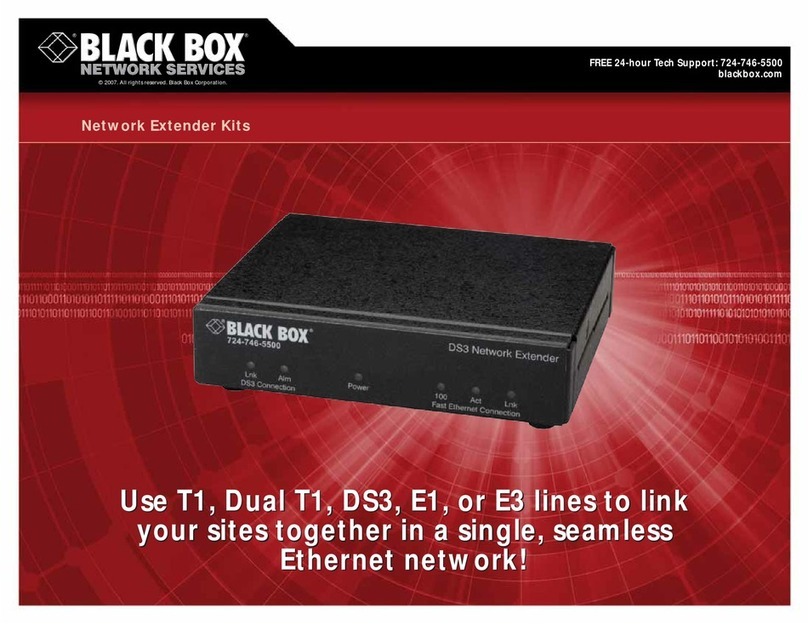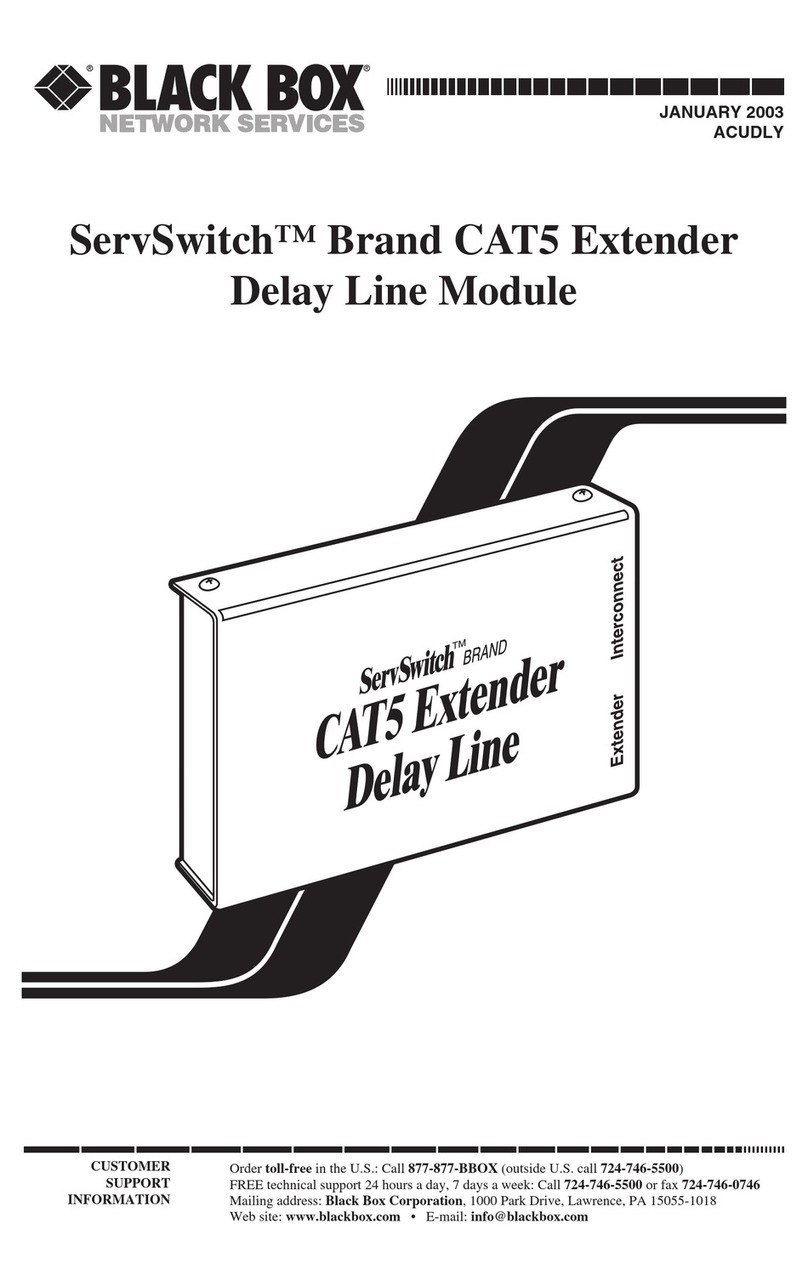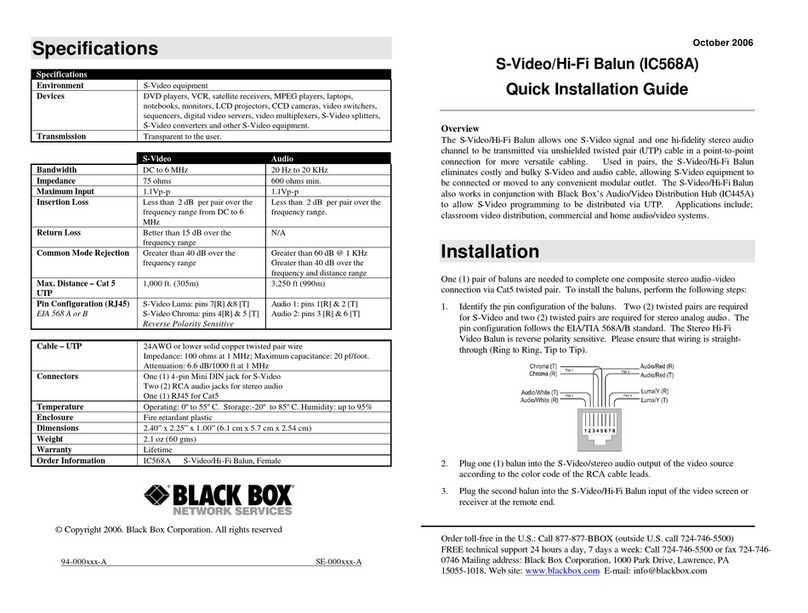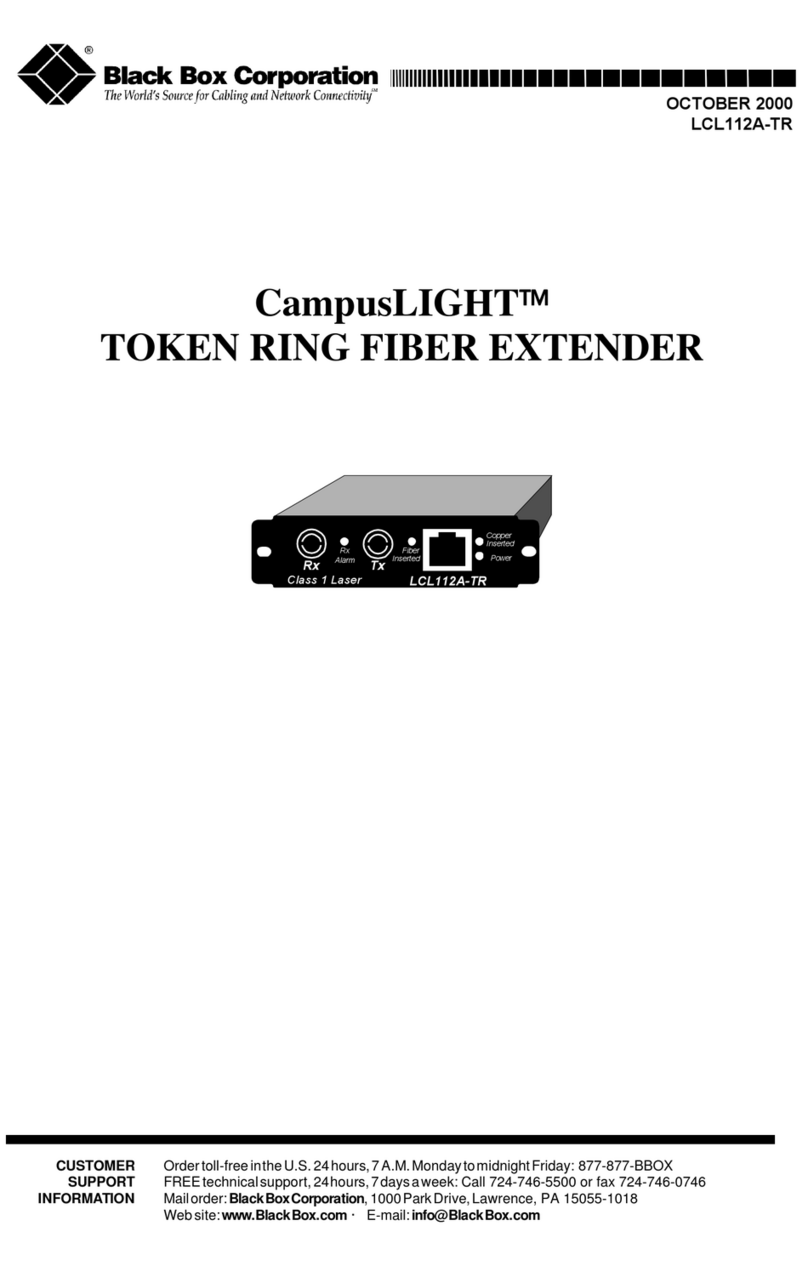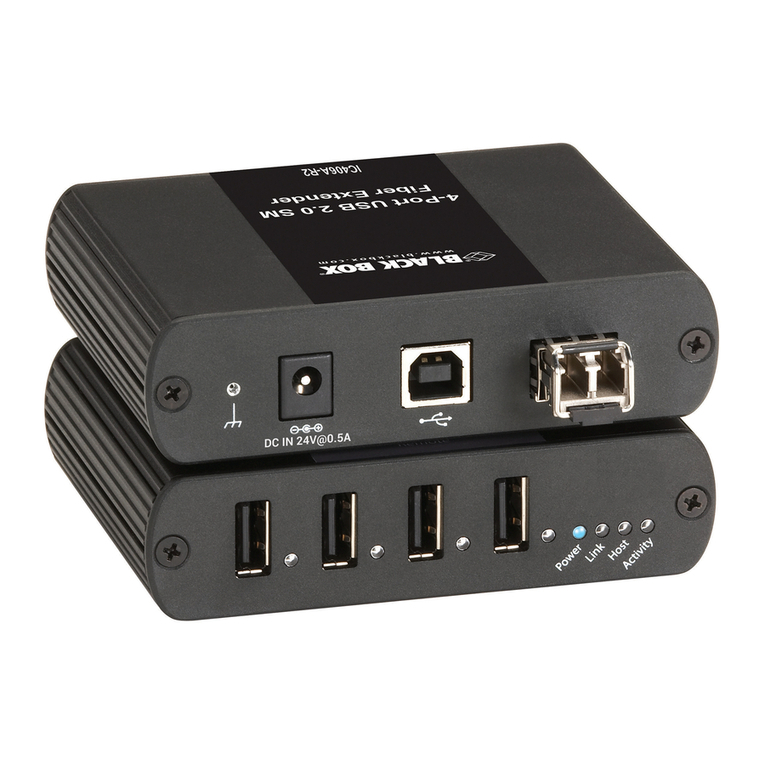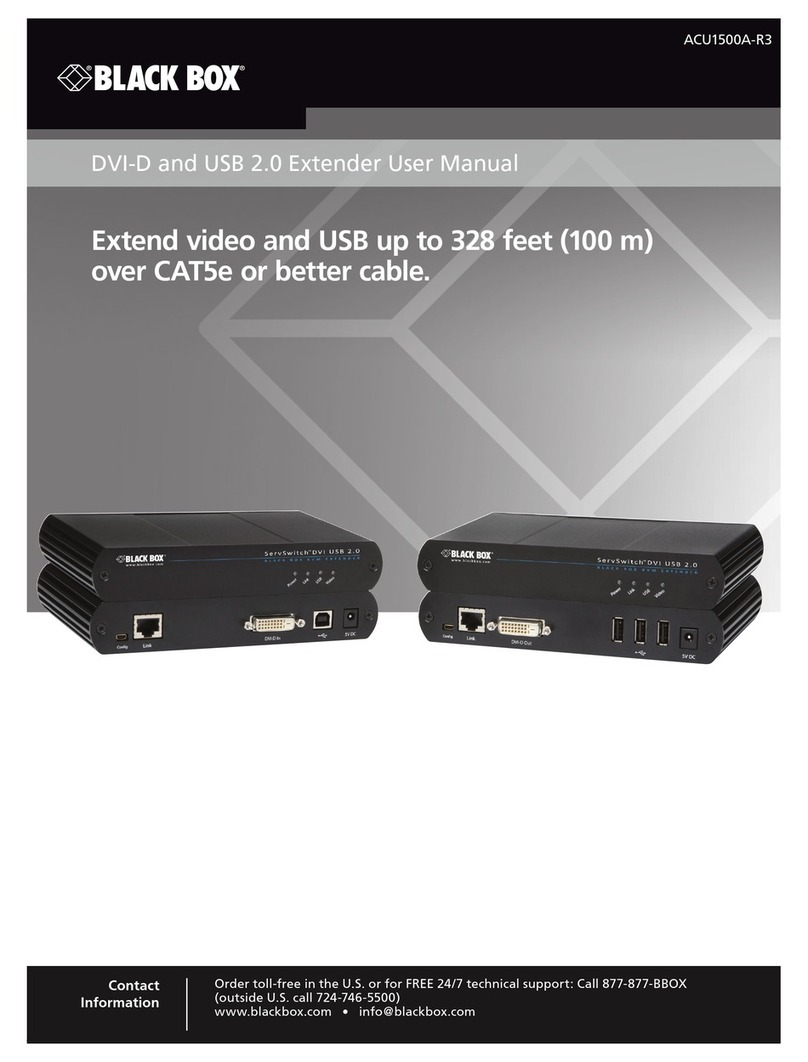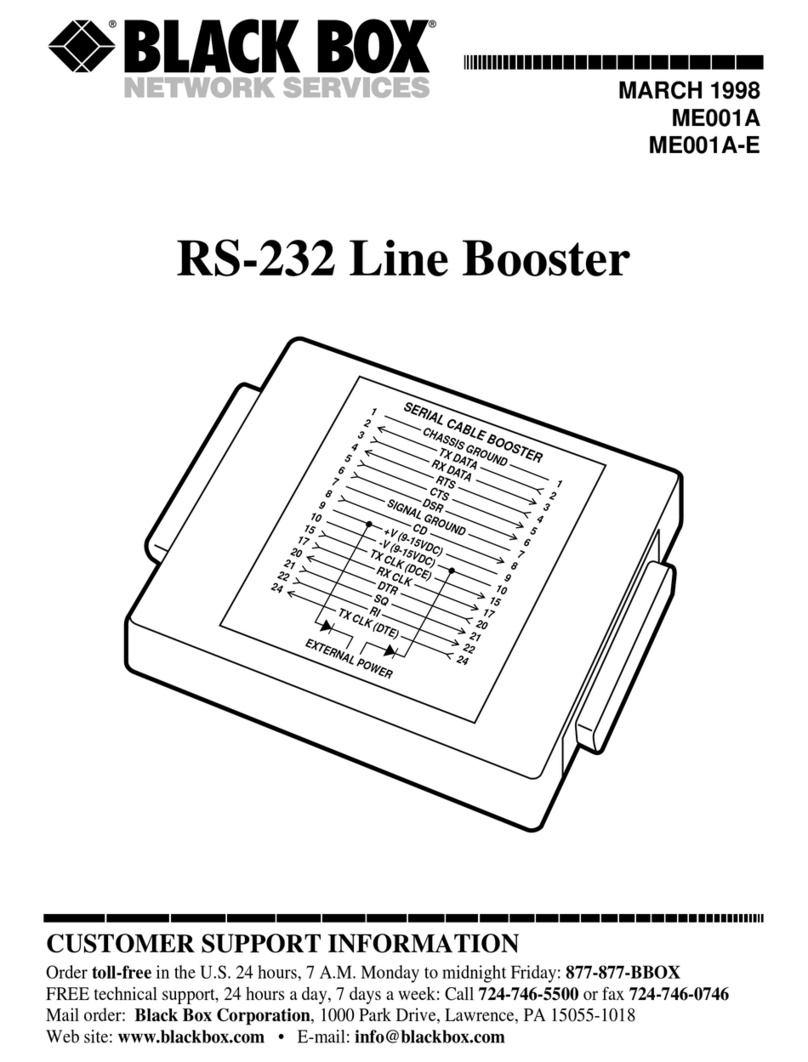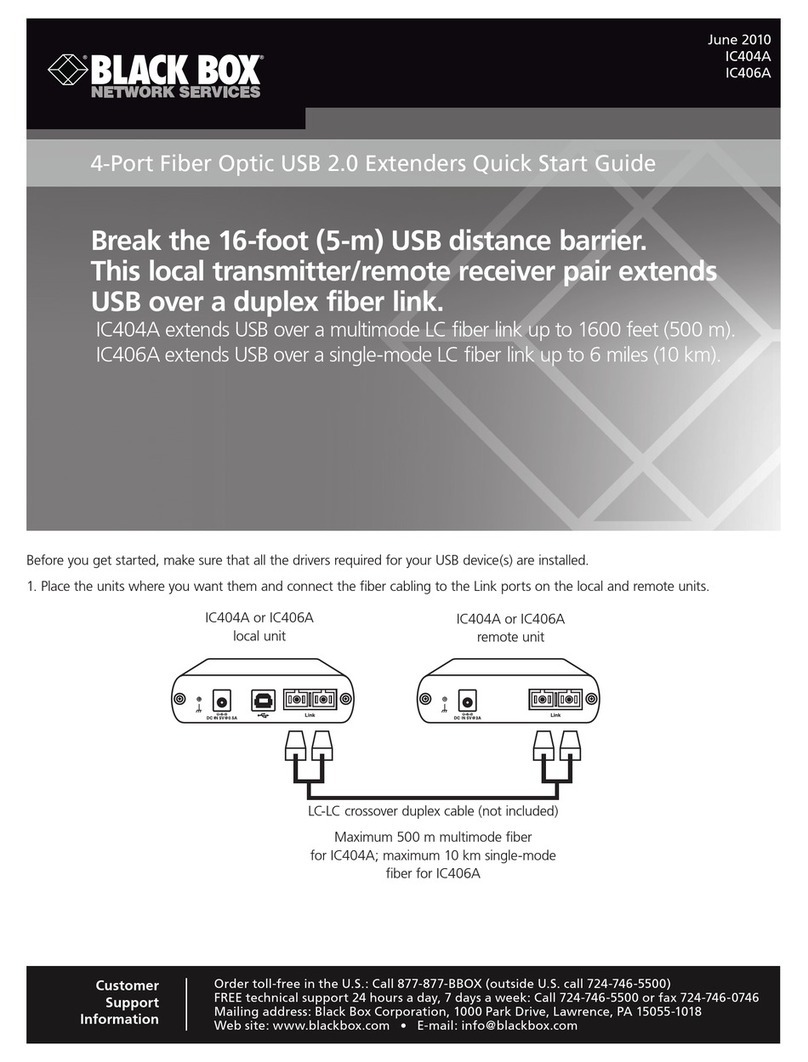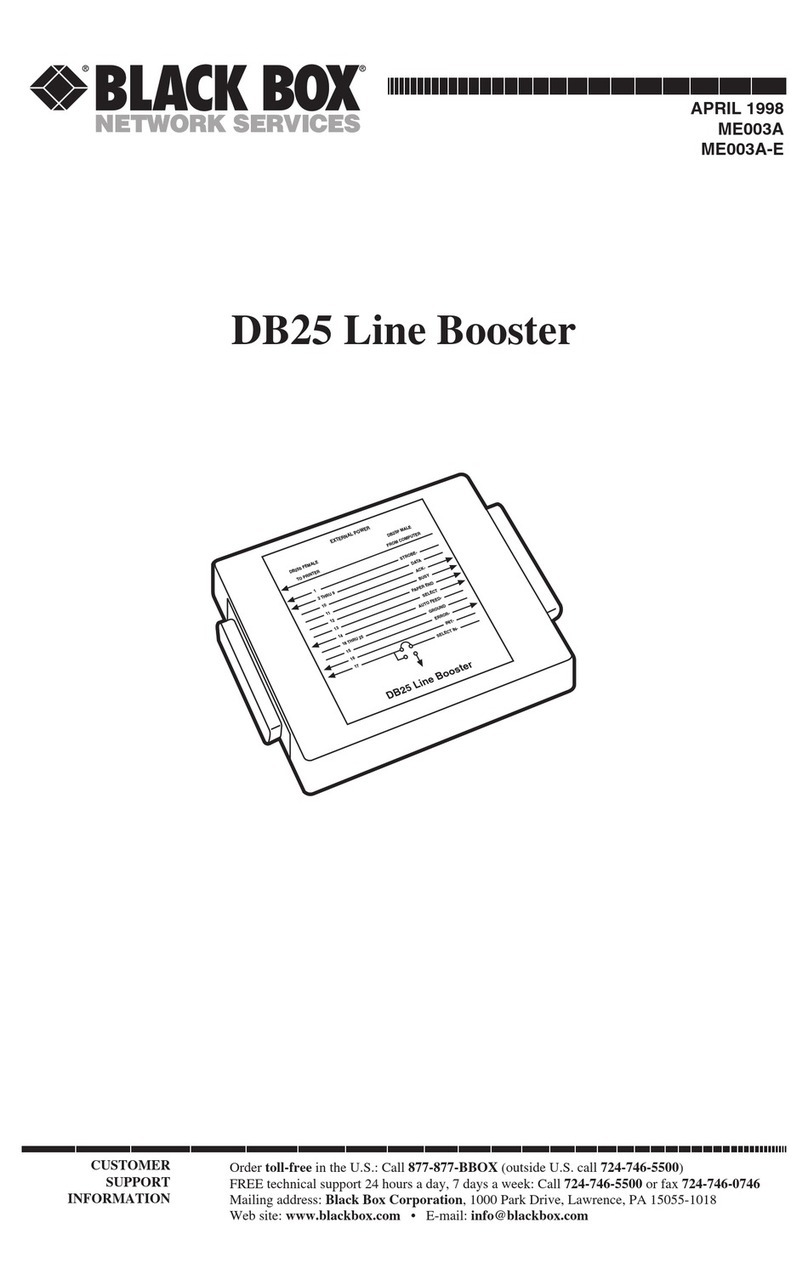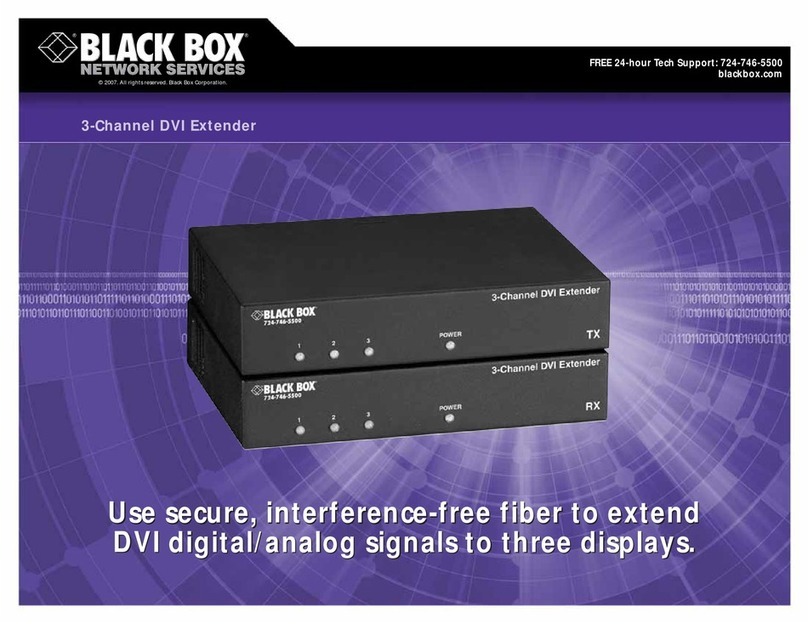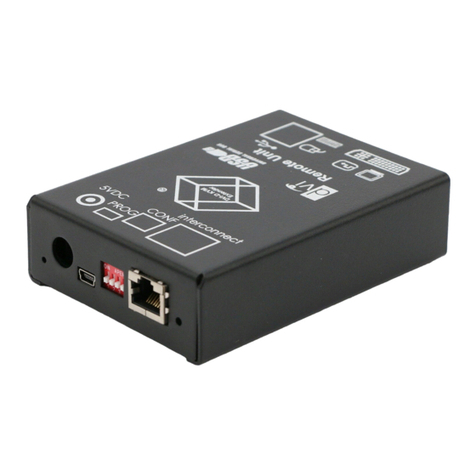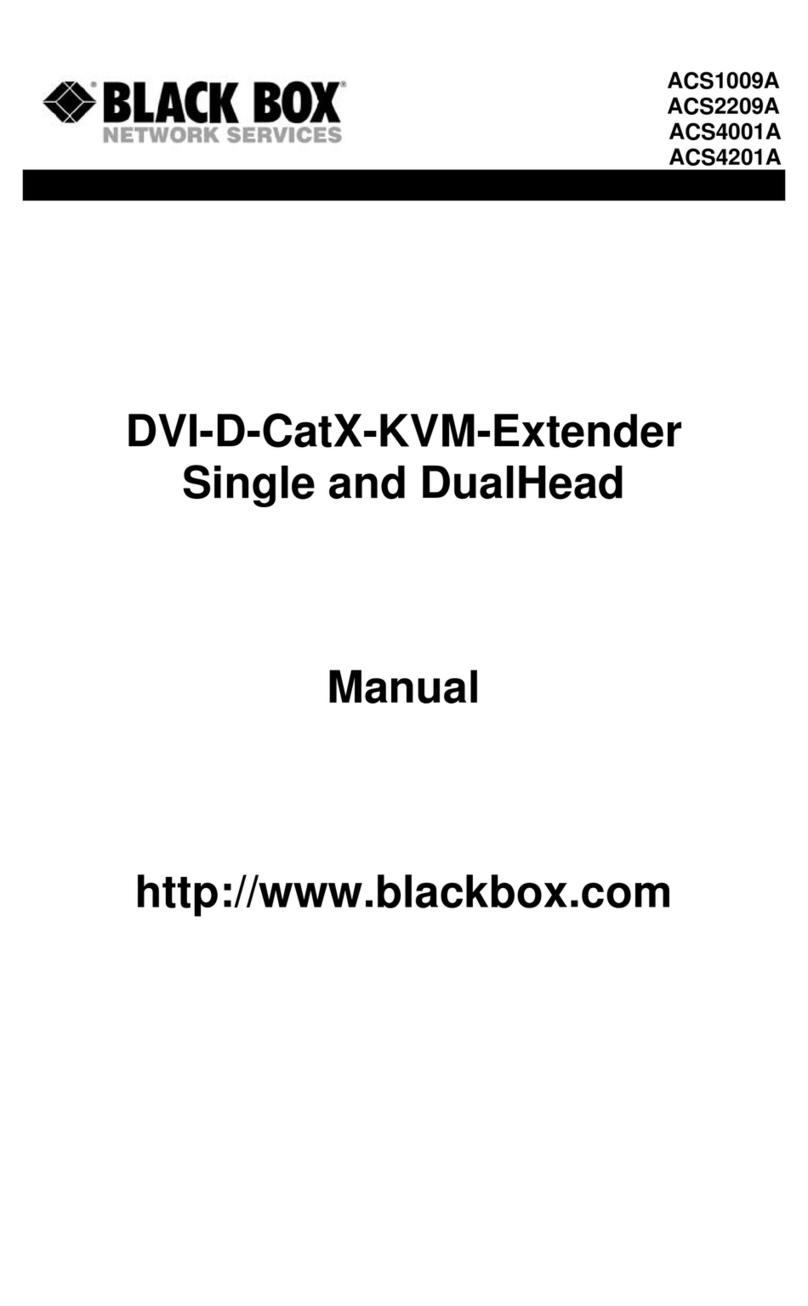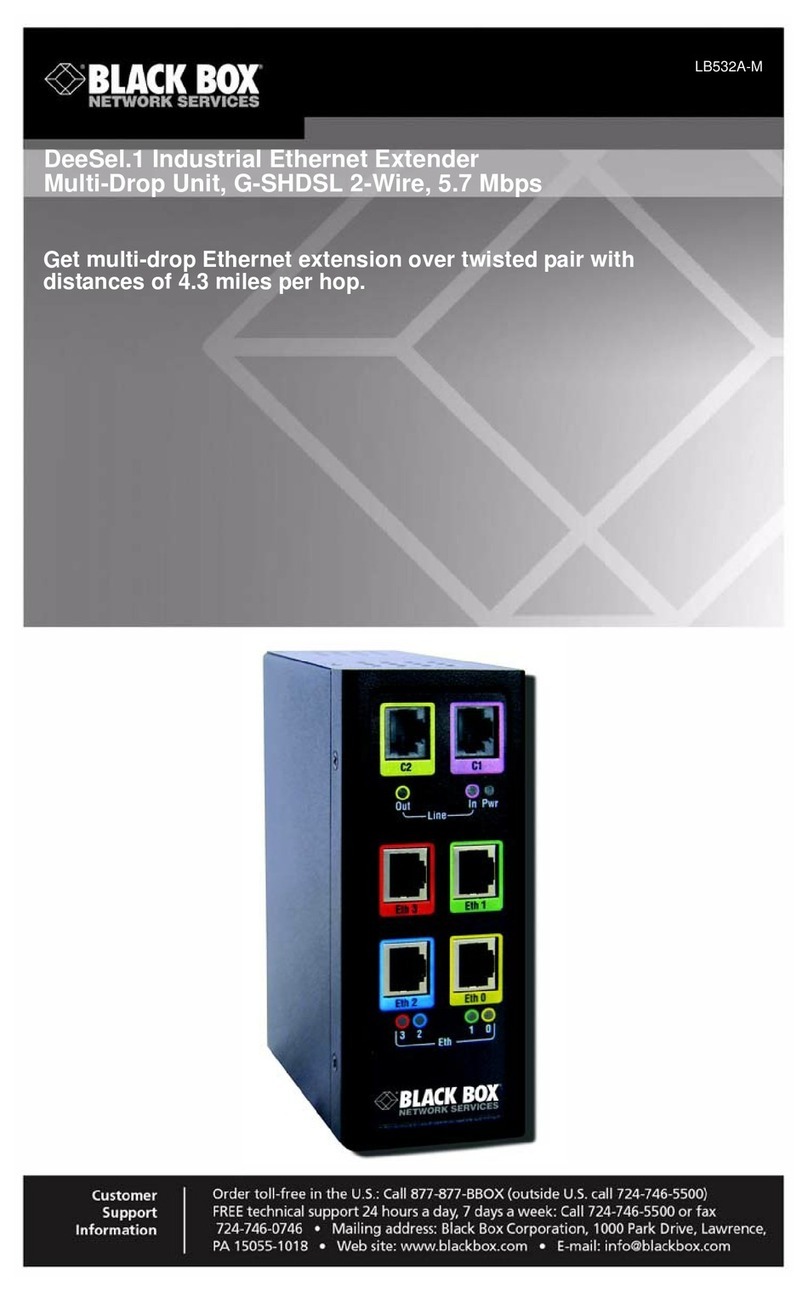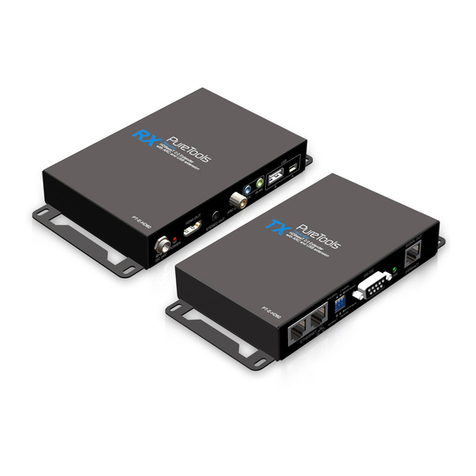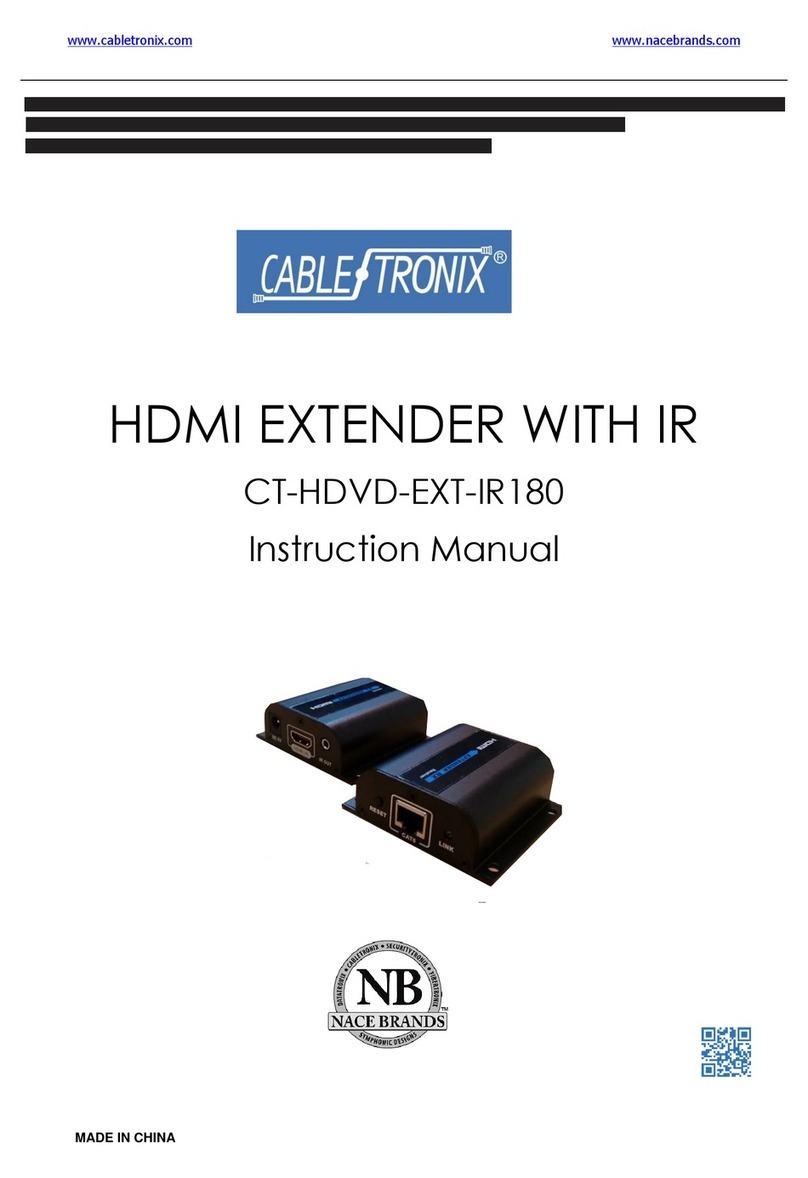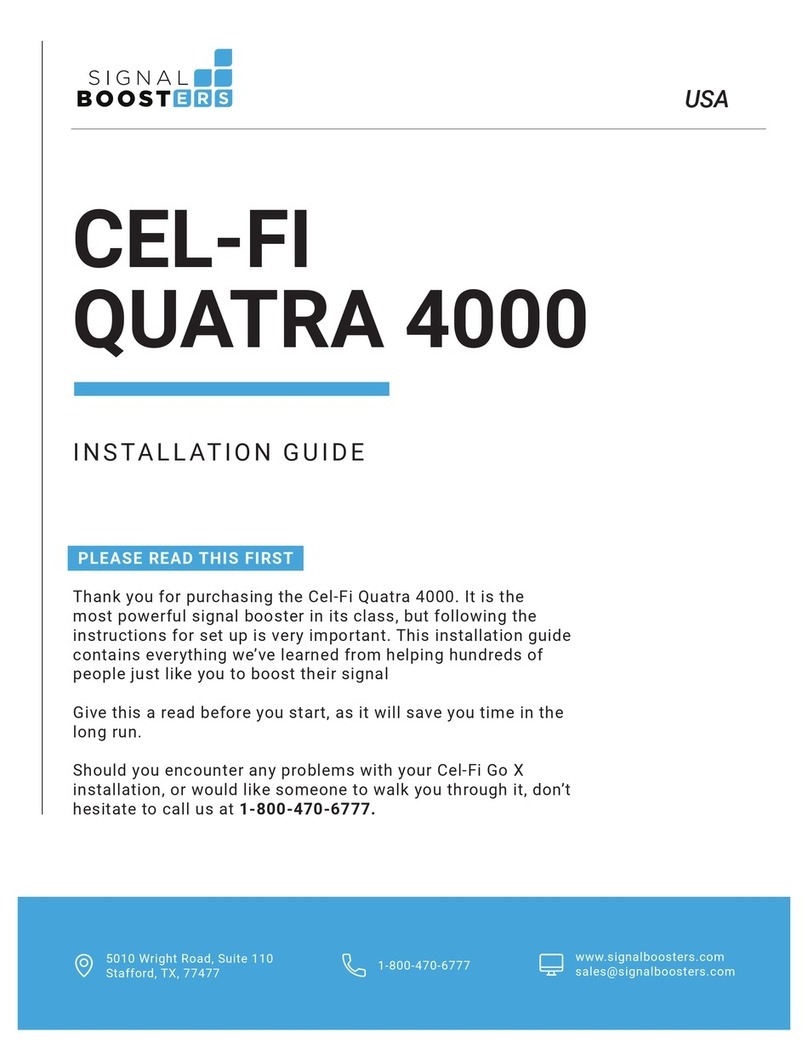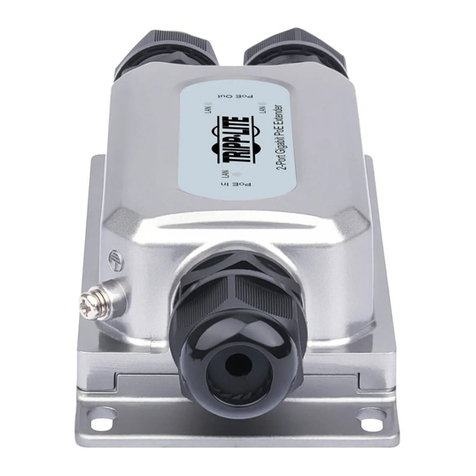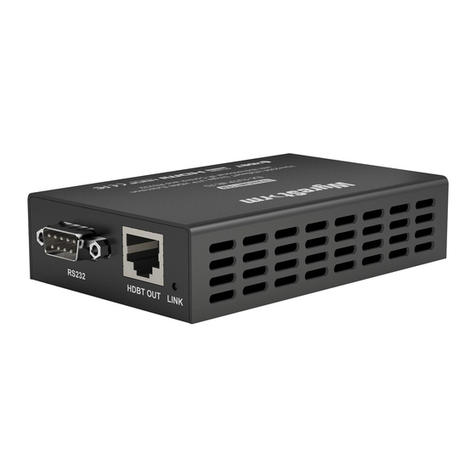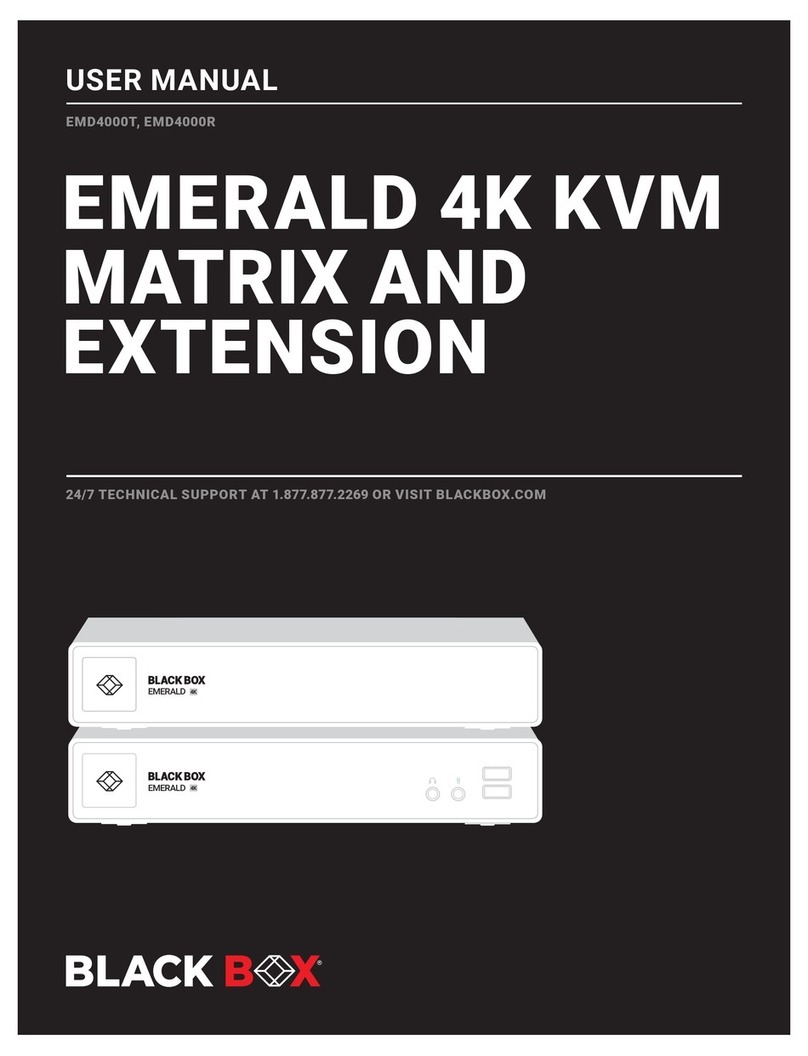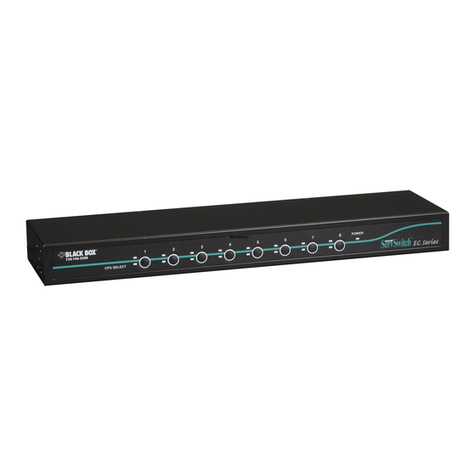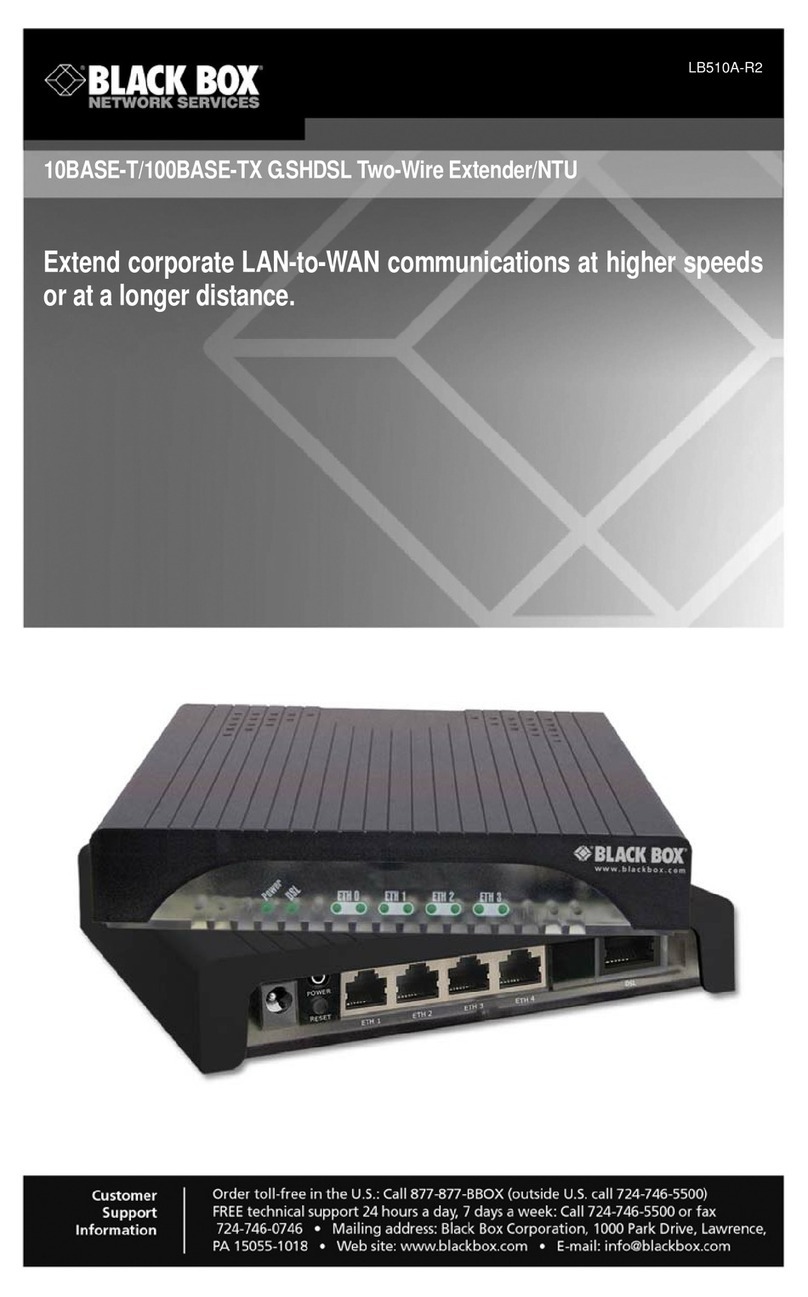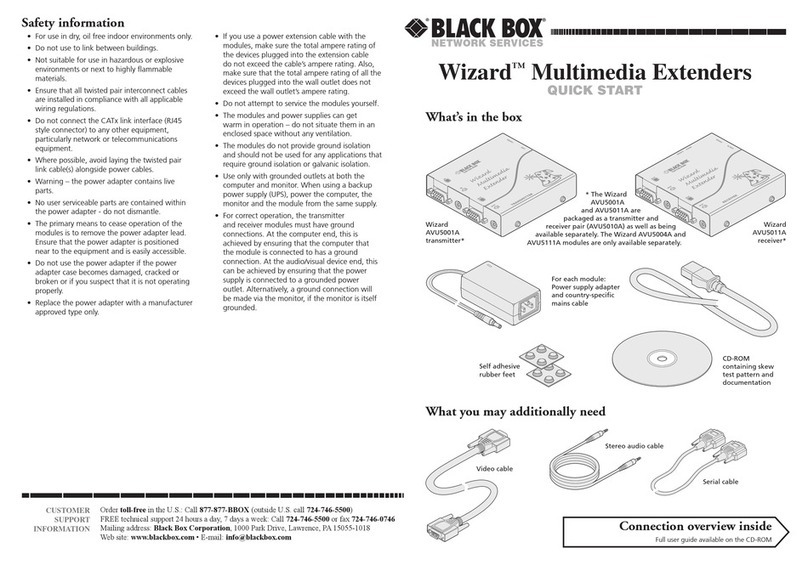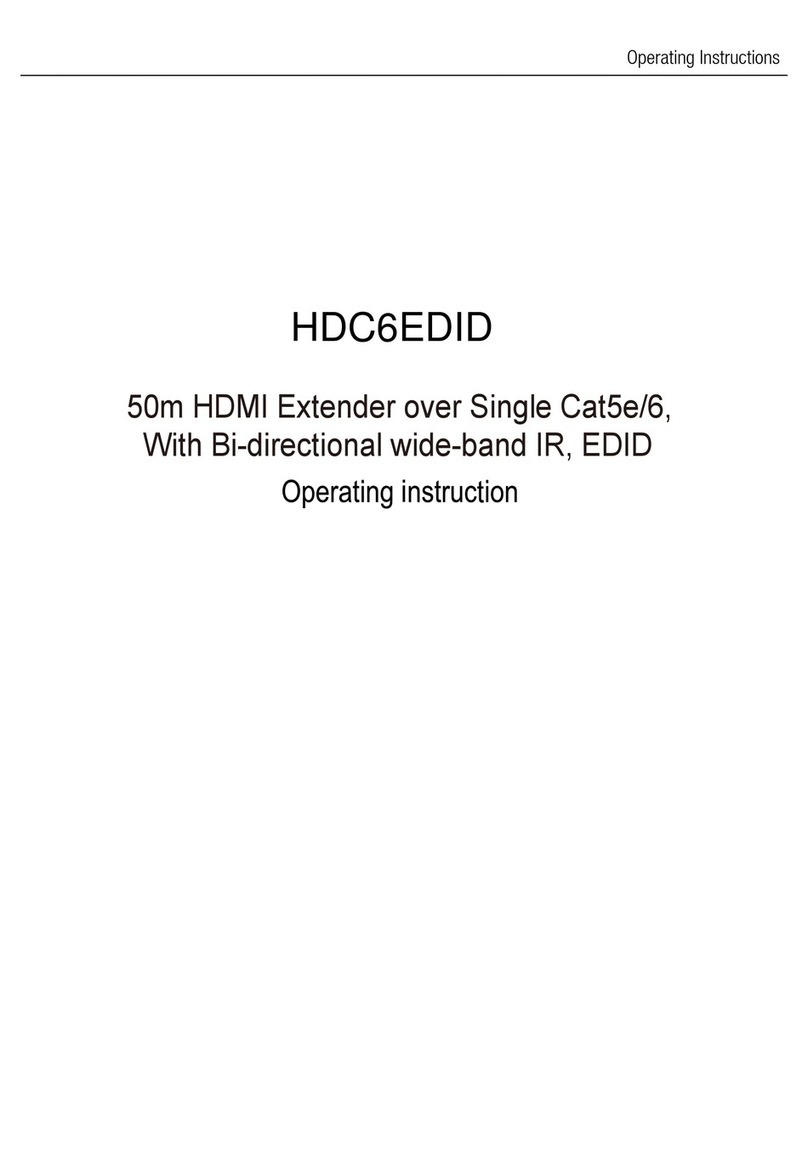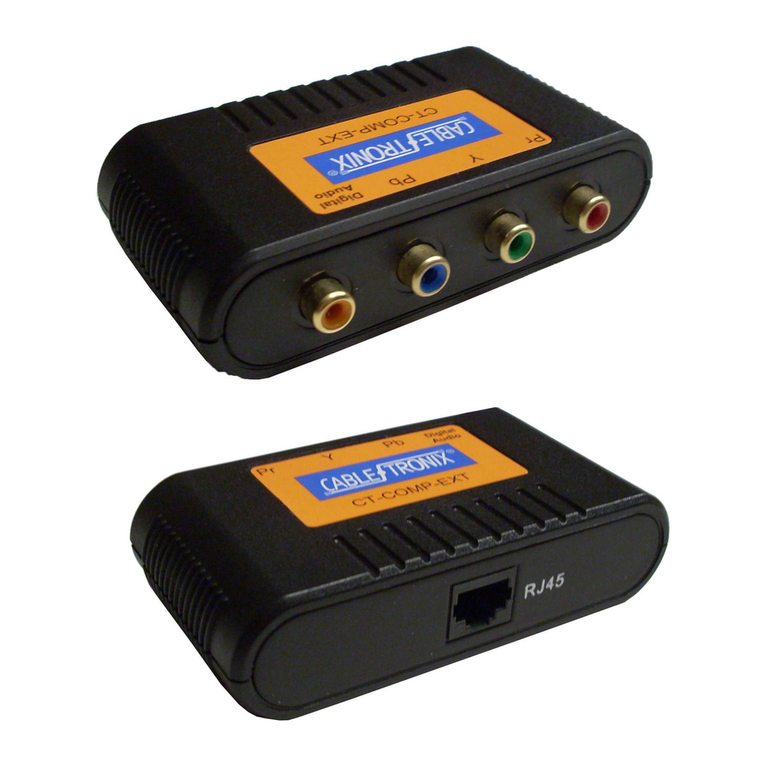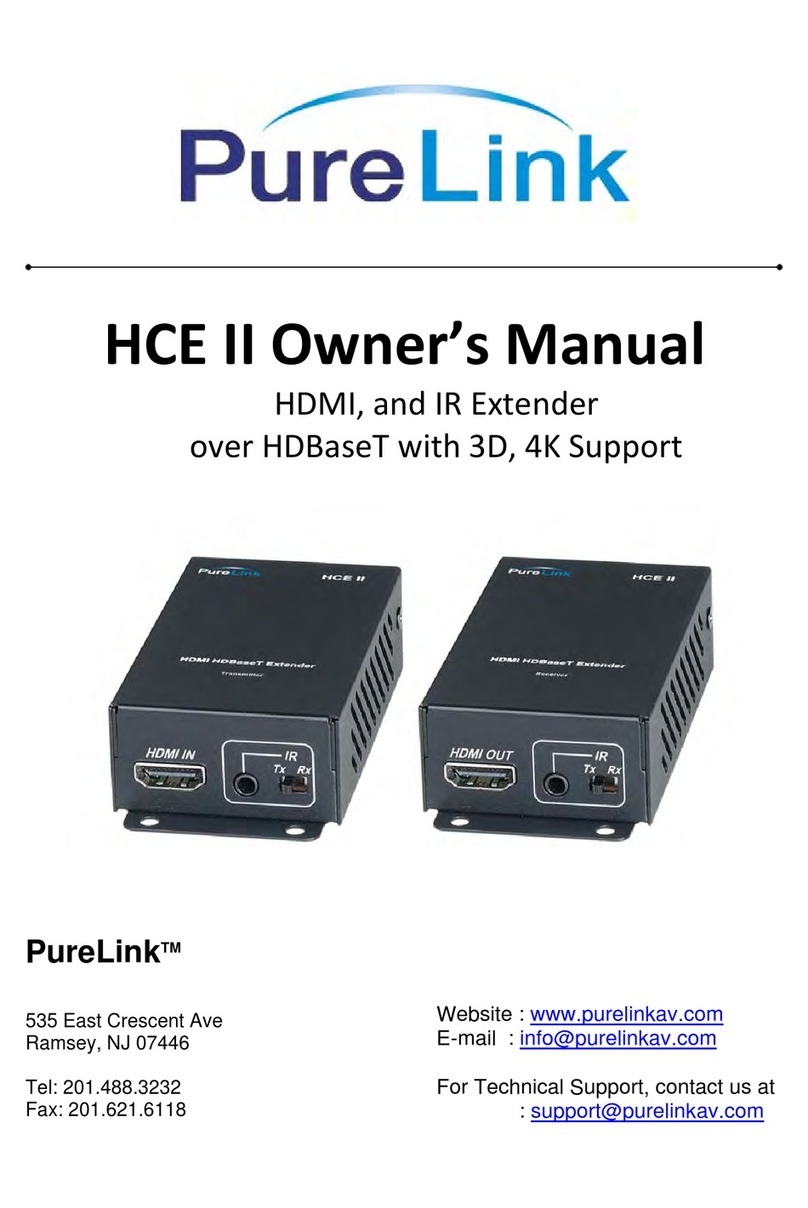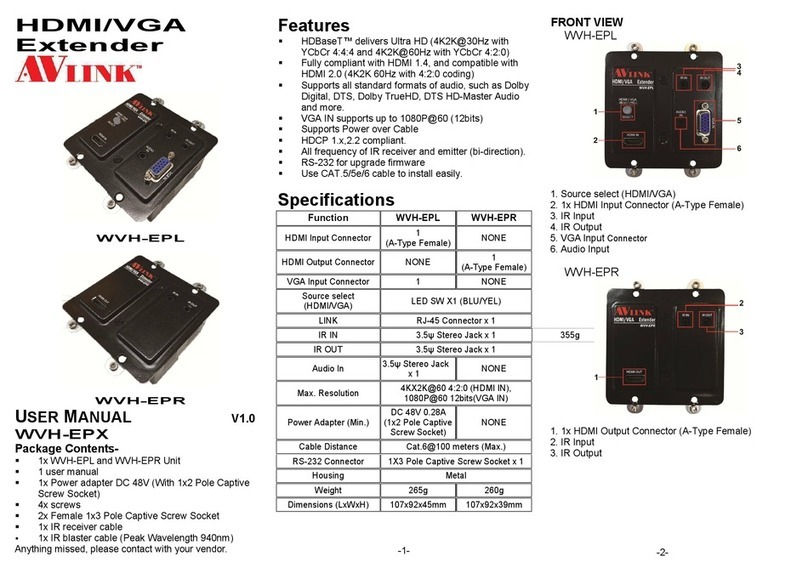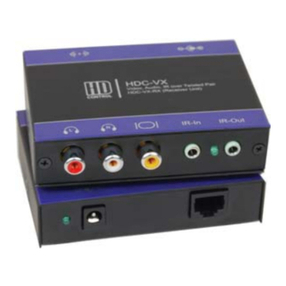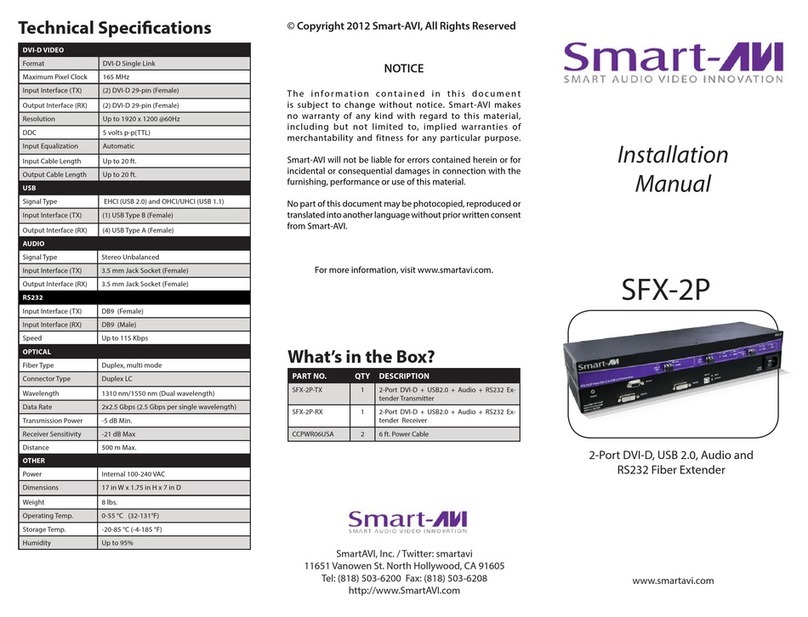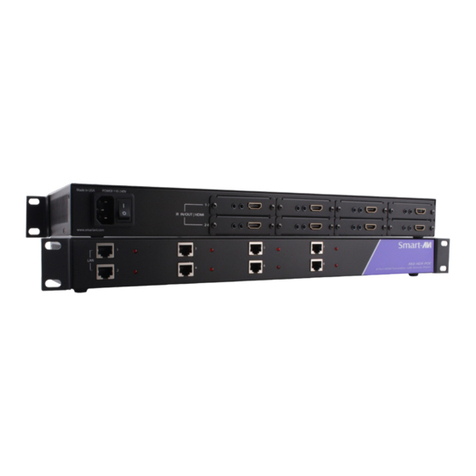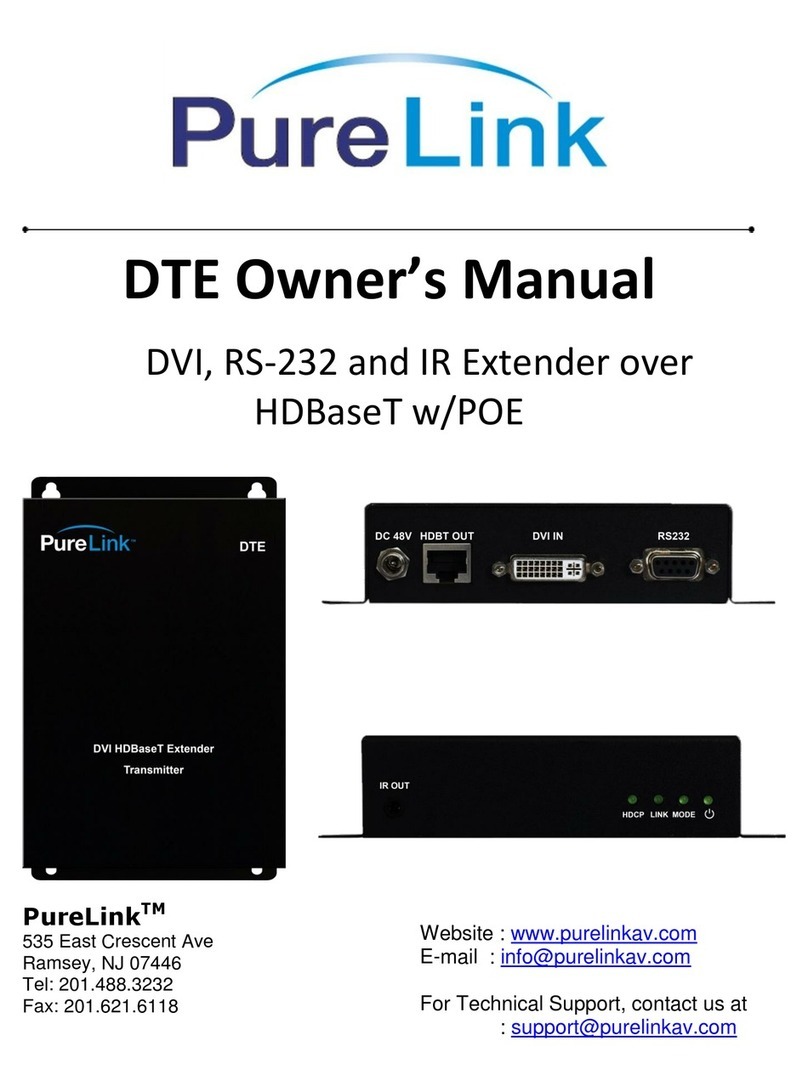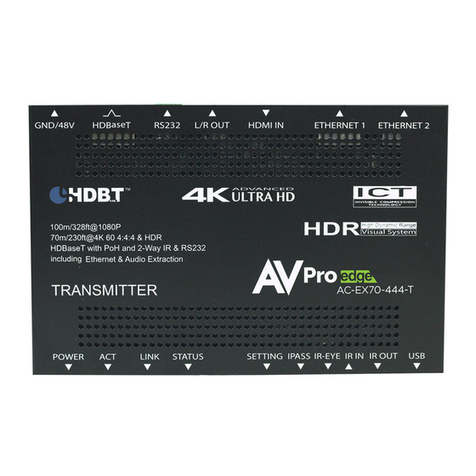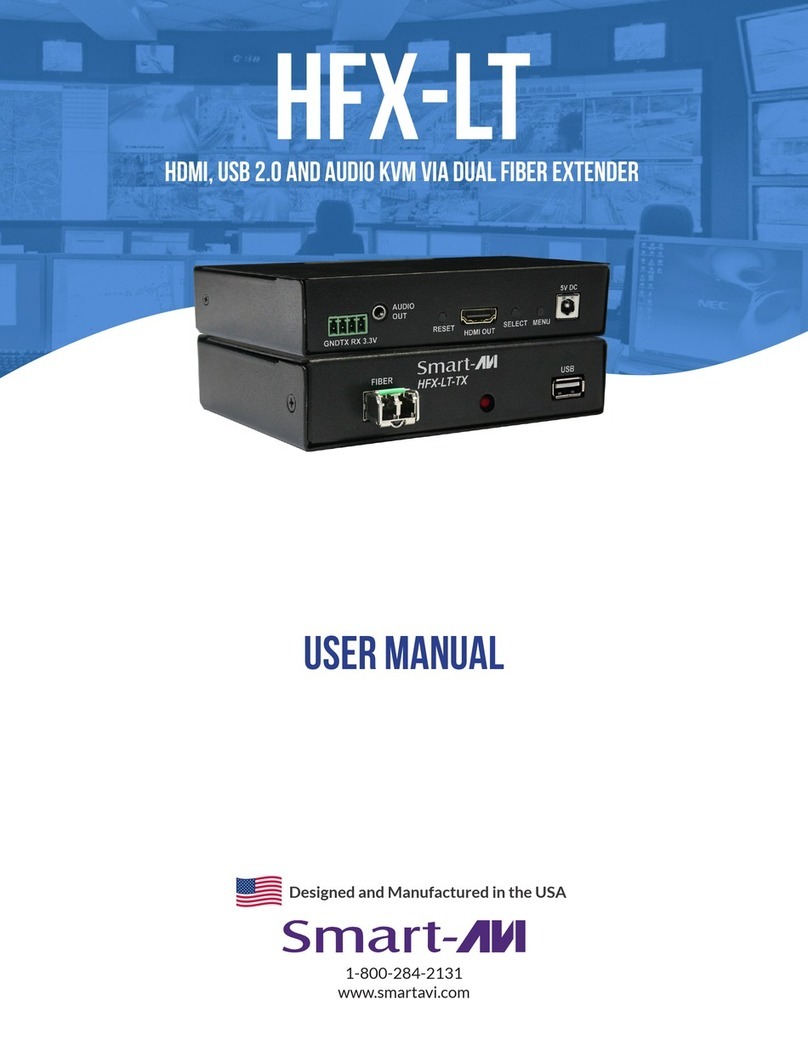2
UTP cable is often used with
video or KVM extenders to extend
the reach of a video signal. It’s
popular for this application
because it’s lightweight, easy to
handle, and inexpensive. But
when you transmit video over
long stretches of twisted-pair
cable, you sometimes run into a
phenomenon called color drift or
color split.
Color drift shows up as that
annoying colored shadow you
occasionally see around objects
on a video screen. It sometimes
happens with UTP cable because
the pairs of wire in the cable are
twisted at slightly different rates
to reduce crosstalk between
pairs. Because of these
differences between wire pairs,
video signals for different colors
often travel different distances
before they reach the remote
receiver. When one color signal
arrives behind the others because
its wire is longer, you get that red,
green, or blue shadow around the
objects on your video screen.
UTP cable varies widely by
manufacturer, so before installing
video extenders, it’s difficult to
determine whether or not you’re
going to have a color drift
problem. You’re more likely to
experience color drift with higher
grades (CAT5e or CAT6) of cable,
There are two prominent
CAT5e and CAT6 cable
constructions on the market. The
first is referred to as “2 + 2,“
where two of the four pairs are of
similar electrical length, and the
other two pairs are of different
lengths. The second cable
construction is known as “3 + 1,“
where three pairs are of similar
electrical length.
If you encounter delay skew
when using the 2 + 2 type of cable
construction, a delay line will be
required because it is impossible
to find three cable pairs that
closely match for RGB. If delay
skew is encountered with a 3 + 1
cable construction, it can often be
eliminated (if not greatly reduced)
by using the three similar cable
pairs to send RGB signals.
The preferred way to
determine which cable
construction you have is to
measure a 300-foot (91.4-m) run
with a cable scanner. Otherwise,
you can strip back 3 inches
(7.6 cm) of the cable sheath and
look at how pairs are twisted.
If you have a 2 + 2 cable, the two
pairs of similar length will be more
BlackBoxExplains:SkewCompensation
on longer cable runs, and on high-
resolution screens.
If you experience color drift,
there are several possible
solutions. You can use a shorter
length of cable, switch from
CAT5e or CAT6 cable to CAT5
cable, use a lower screen
resolution, or use a video skew
compensator.
A video skew compensator
removes color drift by delaying
some color signals to compensate
for differences in wire pairs.
BlackBoxExplains:CableConstructionandDelaySkew
tightly twisted than the other two
pairs. If you have a 3 + 1 cable, the
three pairs of similar length will be
more tightly twisted than the
fourth. The three similar pairs can
then be “pair swapped“ onto the
RJ-45 pins that carry RGB signals
and the fourth can be used for
data.
Local unit Remote unit
Power
Keyboard Mouse
Monitor
Serial port
on monitor
ServSwitch Wizard Extender Kit with
Skew Compensation, Serial, Single-
Access (ACU5110A)
CATx cable up to
984.2 feet (300 m)
CPU
TypicalApplication
